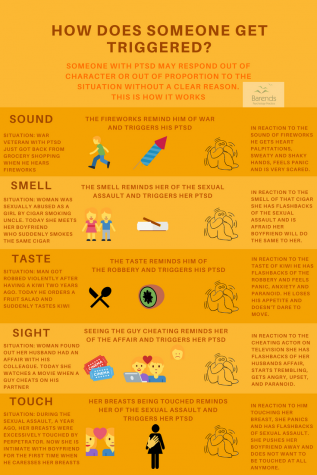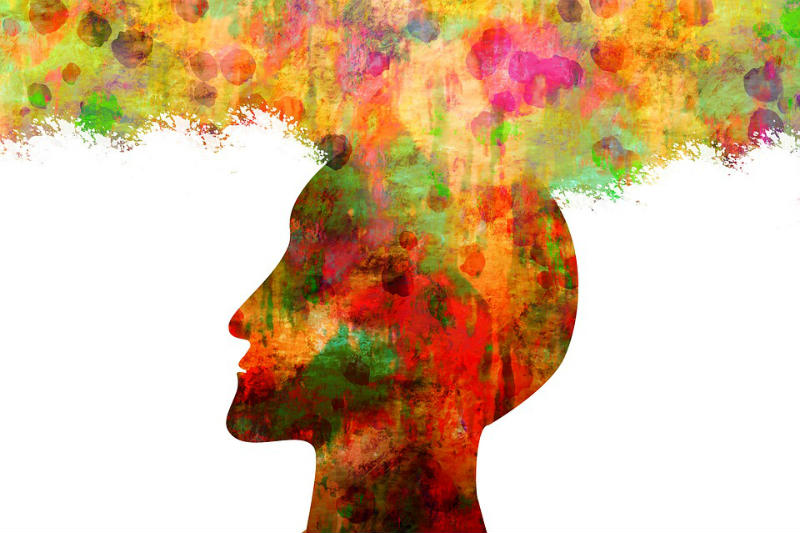PTSD: Trauma and Stress Does Not a Person Bless
PTSD in high school students is more common than you think.
Post-traumatic Stress Disorder (PTSD) is a very common mental disorder, it affects millions of people in millions of ways. Even though the disorder is quite common, there is still a stigma around it. Many people still believe that PTSD is only common in war veterans, they also believe that if time has passed from a traumatic event, the person who experienced the event can no longer experience symptoms of PTSD or develop PTSD. These are only a few of the myths that surround PTSD
Post-traumatic Stress Disorder (PTSD) is a stress disorder that occurs in people who have experienced an intense, often life-threatening event. This includes events such as terrorist attacks, natural disasters, severe accidents, abuse, combat, or sexual assault.

PTSD in veterans is the most well-known form of PTSD. This form of PTSD is often triggered by loud, gun-like noises. PTSD is usually caused in these veterans through shell shock or combat stress.
PTSD comes with severe symptoms. Most people who have PTSD typically experience symptoms such as reliving the traumatic event, the compelling urge to avoid anything that could trigger the event, hypersensitivity and a rise in the nerves that control the “fight-or-flight” response, or negative changes in everyday mood and the ability to think clearly. These symptoms cause the person’s life to be more difficult than it was before the event, it affects their lives daily and may outright ruin parts of their lives.
One of the most common symptoms of PTSD is triggers. A trigger is something that sets off a memory or flashback that transports a person back to the event of their original trauma. Triggers are very personal, different objects, events, or words will trigger people differently. Due to this, many people will begin to avoid situations where the person thinks they may be triggered back into a flashback.

The most common triggering events are typically witnessing situation or events that remind a person of the source of their trauma, seeing images that remind them of their experience, visiting places that remind them of their traumatic experience or hearing words and phrases that remind them of their trauma. Although these triggers may be common, that does not mean that every person will experience them. Different events trigger different people.
According to PTSD United, 70% of adults in the U.S. have experienced some type of traumatic event at one point in their lives, this is about 223.4 million people. Up to 20% of these people go on to develop PTSD, which equates to about 44.7 million people who are struggling with PTSD.
Based on these statistics, it is evident that a good handful of the American population experiences PTSD. However, there seems to be a strong stigma surrounding PTSD. This stigma is present for the sole reason that a lot of people aren’t educated on the disorder itself. This lack of education stems from Common misconceptions about PTSD. Some common misconceptions are that it only affects someone immediately after traumatic ordeals, only military veterans experience PTSD, and experiencing PTSD is a symptom of mental weakness.
People often believe that if time has passed after a traumatic event, the person who experienced said the event is no longer susceptible to developing PTSD. While it is common for PTSD symptoms to arise soon after the event, it can also take months or even years for symptoms to appear. Often times, some people will experience PTSD symptoms as a coming and going ordeal.
People often believe that only military veterans suffer from PTSD. While it is true that PTSD does affect war veterans; PTSD can develop in anyone, no matter the age. However, more women than men are likely to develop PTSD. According to the U.S. Department of Veterans Affairs, five out of ten women experience a traumatic event and also experience those events differently than men. Also, 10-12% of women who suffer from PTSD will have the disorder last their entire life, while only 5-6% of men experience.
Based on these statistics, it’s evident that PTSD is a pretty common disorder experienced by people of a different race, gender, gender identity, and sexual preference. This disorder can be caused by such a large scale of events. It is likely that students here at CKHS may be suffering from PTSD or symptoms of it.
If a student feels as though they may be suffering from PTSD, please contact one of the counselors in the office and they will do their best to give the student the help that they feel is needed. If a student does not want to talk to someone in person, please refer to the following anonymous hotlines:
The Suicide Prevention Lifeline (1-800-273-8255)
SAMHSA’s National Helpline (1-800-662-4357)
Crisis Text Line (Text “HELLO” to 741741)
National Alliance on Mental Illness (NAMI) Helpline (1-800-950-6264)
HopeLine (1-877-235-4525)
Rape, Abuse, and Incest National Network (800-656-3673)
National Mental Health Association Hotline (800-273-8255)
If a student feels as though they are experiencing PTSD or symptoms of PTSD, they need to understand that they are not alone. They shouldn’t feel as though they need to fix their problems on their own. In order to do this, the students of CKHS need to put an end to the stigma around not only PTSD but all mental disorders. It is quite easy to do this. If a person wants to help contribute to ending the stigma around mental illness, they should start by educating them self, then, with this new education, take a stand against people who are contributing to the stigma around mental illness. This can be done by telling people to stop joking about mental disorders, preventing themselves and others from diagnosing themselves with mental disorders, and to treat everyone equally. By doing this, people will begin to feel more safe about expressing their symptoms and experiences with their disorders, making it easier for them to overcome and adapt.



